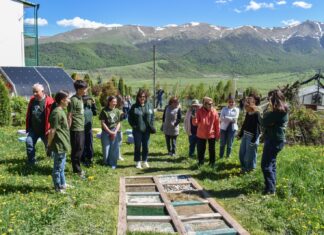STEPANAKERT (PanARMENIAN.Net) — More than 100 pilgrims from Nagorno-Karabakh (Artsakh), accompanied by Russian peacekeepers, visited the Armenian monasteries of Amaras and Dadivank in the past two, the Russian Defense Ministry reported on Monday, March 22.
“As part of the implementation of the trilateral statement of the leaders of Russia, Azerbaijan and Armenia dated November 9, 2020, Russian peacekeepers continue to assist in the restoration of peaceful life in Nagorno-Karabakh,” the Ministry said in a statement.
As a result of the agreements reached, Amaras monastery has now found itself in close proximity to the line of contact in Karabakh. Dadivank, meanwhile, which is one of the oldest Christian monasteries ever, is located in Kelbajar region, which, in accordance with a trilateral statement, came under the control of Azerbaijan in November 2020.
During the recent military hostilities, Azerbaijani forces launched two targeted attacks on the Holy Savior Ghazanchetsots Cathedral in Shushi. After taking control of the city, they destroyed the domes of Saint John the Baptist Church. Azerbaijan earlier “restored” a church by replacing its Armenian inscription with glass art.
Concerns about the preservation of cultural sites in Nagorno-Karabakh are made all the more urgent by the Azerbaijani government’s history of systemically destroying indigenous Armenian heritage—acts of both warfare and historical revisionism. The Azerbaijani government has secretly destroyed a striking number of cultural and religious artifacts in the late 20th century. Within Nakhichevan alone, a historically Armenian enclave in Azerbaijan, Azerbaijani forces destroyed at least 89 medieval churches, 5,840 khachkars (Armenian cross stones) and 22,000 historical tombstones between 1997 and 2006.








